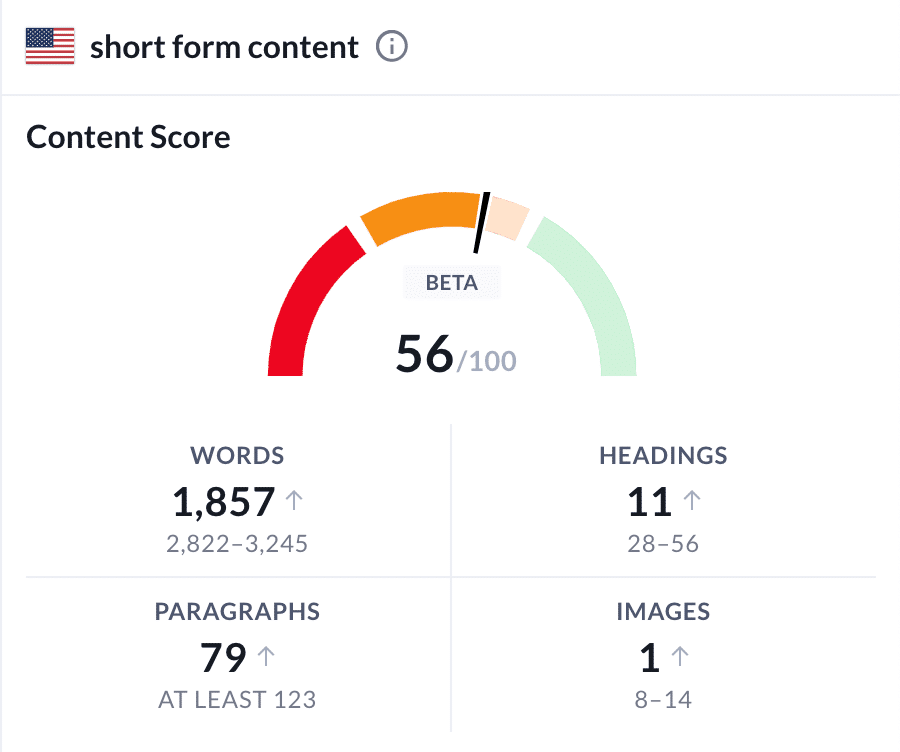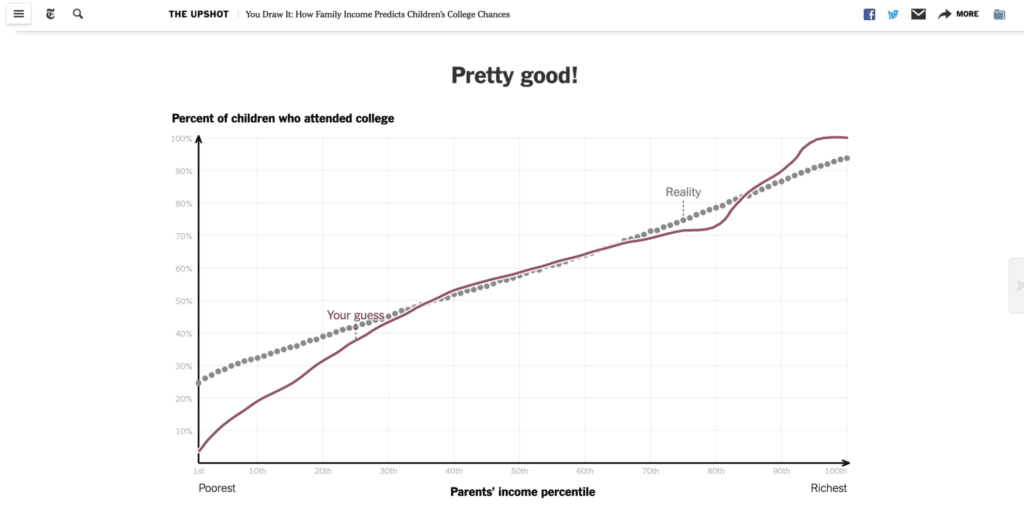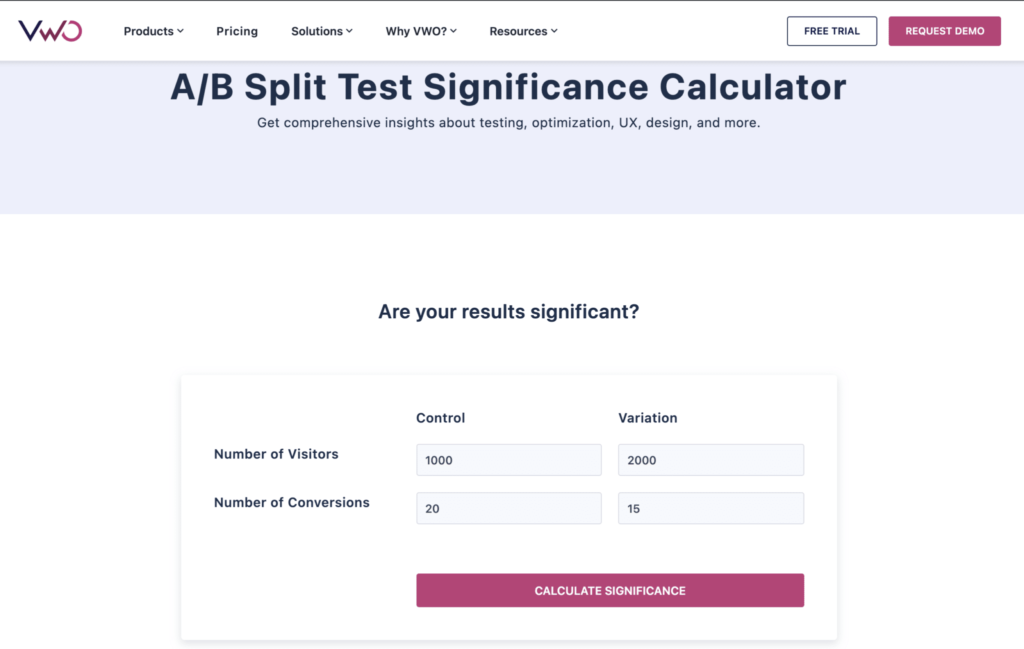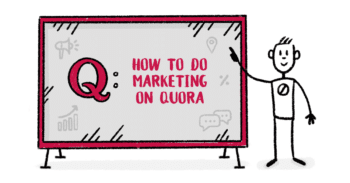Short form content was killed by Google. And that’s bad for everyone

Short form content Vs long form content was one of the most frequent questions among marketers until a few years ago.
Until Google decided to end this debate with its search algorithm. Guess what? Long form content won. Marketers quickly found it out and jumped on the bandwagon and started producing massive 10x blog posts crammed with thousands and thousands of words.
This is bad. It’s bad for me, for you, for humanity… and it’s bad for marketers too.
There was nothing wrong with short form content Google, why you had to kill it?
Ok… you might be a bit lost at this point, so before I keep going with my grumbles let me give you a bit of context.
What is short form content?
Oooh… thanks for asking! You’ll never guess!
It’s short content!
Now that I’ve revealed to you this eye-opening truth, let’s proceed with a more formal definition.
According to Search Engine Journal, a short form content is anything shorter than 1,000 words.
Tweets are great examples of short form content. They are concise and straight to the point (if well written like this one).

How many times have you watched a movie and thought: “It’s good but it should have been 45 minutes shorter”?
Until a while ago, many blog posts could have been classified as short form content. When I started blogging it was totally fine to write an 800 words long piece of content as long as it was valuable for users.
Even before that, when I was a journalist for printed magazines, I would write just a couple of articles per month. And they were short. Long form articles were expensive. They required a lot of pages, content (which was expensive), and photographers. Writers would check word counts mainly to be sure their content would fit on the page.
Yet my short articles were much more valuables than most of the stuff I write today. Why? Because they were packed with ideas, interviews, unique points of view. Every fact, every statistic was double-checked. And they constantly kept readers engaged.
Which was our business model: write great content so users will buy the magazine again next month.
Then…
The rise of 10x content
But over time content marketing became less about engaging users and building a loyal audience. The focus shifted to generating pageview. Setting cookies on users’ browsers for retargeting, capturing emails.
And you know what’s the best way to reach those objectives: ranking on Google.
Don’t get me wrong, Google is smart. But not yet perfect.
And Brian Dean, around 7 years ago, understood that in his imperfection, Google tends to consider a long form content better. I don’t blame them. On paper, it’s a good idea. A long blog post should be more in-depth and more likely to answer users’ questions.
In the real world, however, the Skyscraper technique was born. Ideated by Brian Dean, it was then proposed by many marketing gurus under many names: pillar content, 10x content, and so on.

The idea is simple: write huge blog posts, potentially longer than 5,000 words, to rank better.
Ideally, these “definitive guides” have two advantages:
1) Google prefer them because they are so content reach
2) They get linked more easily by other blogs because being so big they are perceived as high value
Don’t get me wrong. There’s nothing wrong per se with long form content. If you want to write a great guide and it ends up being very long and very useful… go for it! It’s a great idea.
The problem is the concept quickly got abused by marketers looking to game Google more than to provide value to their users.
And this brings us to today. Everything has become a battle to write the longest possible content to rank on Google. Even when there’s no reason to do it and a short form blog post could communicate the same useful information.
Everyone is obsessed with word counts. For some blogs, every blog post published is a “definitive guide” to something. The average length of a blog post has gone through the roof in the last few years.
As I’m writing this blog post in SurferSEO, the tool, after analyzing the SERP, is recommending me to write between 2.822 and 3.245 words to have a chance to rank what you’re reading. This approach force content creators to focus on length rather than value.

And every new blog that wants to rank for a specific keyword will try to publish something longer (and usually more boring) than what is already ranking in a crazy battle for the self-destruction of inbound marketing.
Why Pillar Content could be bad for Marketers?
I’m probably exaggerating here but I’m starting to think that the abuse of long form blog posts could in the long run lead to the death of inbound marketing.
I see 2 main issues with inbound marketing today. Especially for smaller publishers.
Content Marketing has become a must-have
This is not a problem by itself but nowadays any company is betting on content marketing.
Like every marketing strategy, the more it’s broadly adopted, the more it becomes ineffective for the vast majority of users.
Every new market nowadays gets quickly saturated by a huge amount of content from thousands of websites.
While nowadays there are 10x more blogs targeting any keywords, there are still just 10 results on Google’s first page for that search term. As you might have heard, there’s no best place to hide a dead body than Page 2 on Google. Only being in the top 10 will actually drive you meaningful traffic.
Long form contents are driving inbound marketing costs up
If the increased competition was not enough… here comes pillar contents.
The need to continuously write longer and longer posts are making content marketing way more expensive and time-consuming.
In the past, you could rank on Google with a great 1,000 words blog post. That would take you a relatively short amount of time to write or a reasonable amount of money if you are using external content writers.
Having to write a huge 2,000/3,000 words content is way more expensive both in terms of money and time. Even when using a copywriter, you’ll have to review the blog post, create enough illustrations, and so on.
Why Pillar Contents are bad for end-users?
Again, don’t get me wrong. I’m not against a great, in-depth piece of content.
The problem is most blogs and companies are writing long form content for the sake of Google.
I’m a strong believer that Marketing is about exchanging value:
Interesting content for attention and brand recognition.
A great eBook or Webinar for an email or phone number.
A great product for the money.
A great customer experience and support for referrals.
I’m cool if you write 5,000 words and they are packed with value.
That’s not what’s happening for most “10x content” I’ve been reading recently. They’re not 10x more valuable. They have the same few interesting concepts as the old 1,000 words contents. But now those concepts are hidden between thousands of useless words you’ve read over and over again everywhere.
As a content consumer, I get scared every time I see super long form content. Taken aside a few exceptions they’re usually gonna be a huge waste of my time just to receive few valuable pieces of information.
What marketers can do before they kill inbound marketing?
Simple. Focus on providing value to your reader. Think about your blog as a publishing business.
Of course, you want to increase the number of copies sold (visitors) but you also want them to think “Wow, what an amazing read” and come back every week to get more of your content.
Here are some alternatives to writing 5,000 words blog posts and some crazy ideas I had.
1) Focus on UX rather than length
What about focusing on creating a great piece of content that also has a great UX and makes it easier for the reader to absorb the core ideas you want to communicate?

This visual guide to machine learning is a great example. The post is not super long but the UX is great and as you scroll the visual part animates to reinforce the core concepts.

Adding interactivity is another great way to create content that has a high likelihood of being linked (and so to rank). In “How Family Income Predicts Children’s College Chances” the NYT lets you draw a line chart with your best guess and then compares it with the real-world data. It’s entertaining and makes the content more enjoyable.
2) Code as content
I’m a huge fan of “Code as content”.
Instead of writing a super long post on a topic, why not write a short form content and pair it with some kind of free tool you can build?
While not content-rich for SEO, free tools are extremely linkable and could have a huge impact on your traffic.
In AdEspresso, we built an ads galley (it’s dead now… thanks to Facebook!). It was the best marketing investment we ever did. It generated hundreds if not thousands of links, was our most visited content, and helped us rank better all across the board.
Of course, here you’ll need to pair your content creators with developers but the effort is totally worth it.
Visual Website Optimizer has an “A/B Test Statistical Significance Calculator” which is useful and super simple to code. Likely anyone could build it in Javascript in a day. Over years it has amassed more than a thousand backlinks. Its impact on them has been huge!

In my new company, Breadcrumbs, we’ve built a free email validator to check if an email address really exists. It’s super useful for our audience to quickly validate your mailing list and avoid spending money on contacts who’ll never receive your email.

It has already generated a lot of backlinks for our relatively new website. But that’s not all. Its initial launch attracted a lot of visitors and it has also generated hundreds of qualified leads for our business!
3) Content Downgrade
This is a crazy idea, but one I’ll be testing soon.
Everyone’s favorite lead generation tactic is the content upgrade.
You publish a blog post and you offer something longer and more in-depth like an ebook as a content upgrade for lead generation.
Awesome. But what if your content is already longer than a book to lease search engines?
Here comes my idea: The content downgrade!
Instead of offering something longer, offer them something shorter. A checklist, an implementation plan, a worksheet. Anything that can give them value right away within a single-page pdf.
In the past, I’ve tried checklists in AdEspresso and they worked like a charm. Most users nowadays are overwhelmed by the amount of content available for them. And time is limited.
Offering your audience a quick and actionable summary of your content is a great way to get their emails!
4) Content Curation
I’m a big fan of content curation.
If there are already great resources on a specific topic and you feel there’s not much you can add to the conversation, just go the curation way.
It’s a great, fast and cheap way to add value to your audience. Just create a resource listing all the best blog posts already available on the topic, maybe highlighting right away the key takeaways from each piece of content you’re linking to.
Life is too short to spend time writing something that has already been written better by someone else.



June 2, 2021
Great post. It's frustrating having to create super long content. I've noticed the useless bloat in some of my favorite bloggers articles and it sucks. The tools/interactive idea is good. I created a tool many years ago and it is actually ranked on many words - so this seems to work well. Thanks